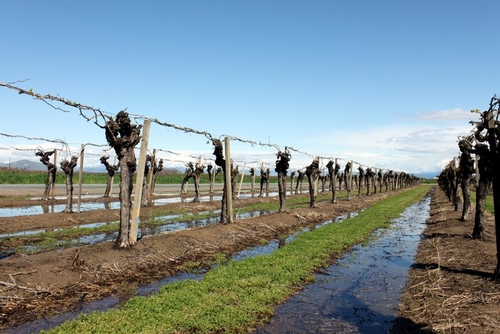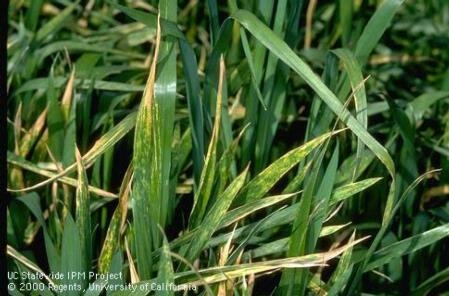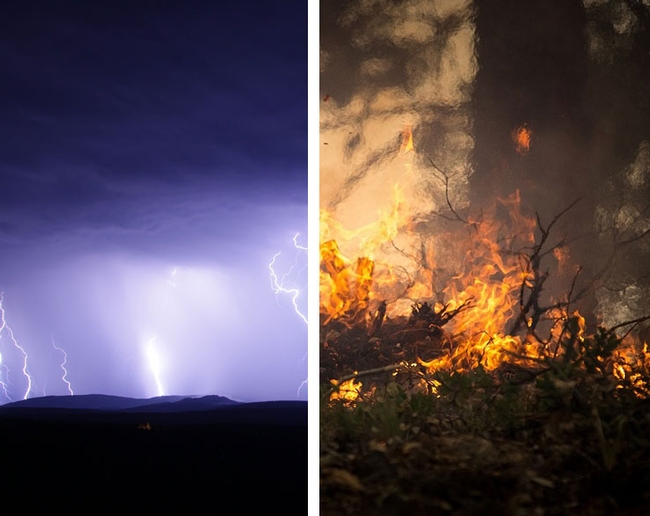Posts Tagged: rain
Precipitation and wildfire impacted by climate change
A new study out of UC Riverside projects an increase in rain and snow in California due to climate change, reported Matt Smith on Seeker.com. Anthropogenic impacts on climate are expected to produce a chronic El Niño-like weather pattern off the Pacific coast of the U.S., leading to about 12 percent more rain and snow by 2100.
The study used a newer computer model and relied on other models that have a better record of simulating precipitation and the effects of an El Niño on the state. El Niño, the cyclical warming of the Pacific Ocean near Earth's equator, typically produces warmer temperatures across much of the United States and more rainfall over California.
Meanwhile, an article by Joshua Emerson Smith in the San Diego Union-Tribune presented less-welcome climate change news. It concluded that wildfires are expected to get longer and more intense in California due to climate change.
“We will need some very new approaches to deal with both the increasing hazard of fire and our increasing exposure to it,” said Max Moritz, UC Cooperative Extension specialist in fire ecology and management at UC Berkeley's College of Natural Resources. “The situation we have created is dangerous, and without a major shift in perspective it will only get worse.”
There are ways to limit the ignition of the wildfires. The article said about 95 percent of all wildfires are caused by people, so it's important to be aware of fire-safe practices pertaining to home maintenance, campfires, target shooting, vehicle use and other outdoor activities.
Here are a few examples of fire-safe best practices:
- Mow lawns in the morning before it gets too hot. Never mow when it is windy or extremely dry. Avoid rocks when mowing; metal blades can cause sparks when they hit rocks.
- Don't drive a vehicle on dry grass or brush. Don't allow vehicle brakes to wear thin, as thin brakes can cause sparks. Carry a fire extinguisher in the car.
- Maintain 100 feet of defensible space around homes in fire-prone areas. UC ANR experts recommend a five-foot zone immediately adjacent to the home be completely devoid of plants and anything combustible.
Rain soaks California farms
People involved in agriculture rarely complain about rain, but the latest series of winter storms has folks talking.
The San Joaquin Valley Viticulture Facebook page, maintained by UC Davis viticulture specialist Matt Fidelibus and Fresno County UC Cooperative Extension farm advisor Stephen Vasquez, reported on the drenching in the center of California.
"We've received more than two inches of rain at Parlier in the last 48 hours, and rain is likely for 7 of the next 10 days," read a post made at 4 p.m. on Monday.
Sacramento Bee reporter Loretta Kalb got commentary about the wet weather from the director of UC Cooperative Extension for Sutter, Yuba and Colusa counties, Chris Greer. He said the effects of this year's late-season soaking raised concerns for some row crops and tree crops. The wet ground will make it difficult to plant some crops such as rice during the traditional late April or early May schedule.
"If we don't get the ground dried out completely, it warms up, the weeds start growing, and they get a head start on the crop," Greer said.

Flooded San Joaquin Valley vineyard.
Rainy season was good for valley wheat growers
The rainy season of 2009-10 was good news for San Joaquin Valley wheat farmers, according to an article in Western Farm Press.
It was the wettest growing season in the past five years, wrote reporter Harry Cline. Central Valley dryland producers are happy; coastal and Delta farmers, however, got too much rain, which cut early production.Cline gathered the information at a UC Cooperative Extension cereal field day in Tulare County. At the field day, UCCE farm advisor Steve Wright said the rain saved growers two 4-inch irrigations.
“That is huge — saving 8 inches of water,” Wright was quoted.
One concern that arises in wet weather is stripe rust, but it caused more damage in triticale than wheat this year.
“All PCAs and growers were watching for stripe rust this year since it was projected to be a bad rust year. There were hits, but it never took off and blew up like it did in 2003,” Wright was quoted in the article. “Newer varieties still have pretty good resistance and some fungicides went on, but overall it was not that bad. Even in the Sacramento Valley, stripe rust did not take off as expected this year.”

Wheat foliage damaged by stripe rust.
May showers
A wise man once said that God made weather so farmers would have something to complain about. Or maybe he was just a wise-acre.
One very wet spring a few years ago I was talking with another wise man, the late UC plant pathologist Joe Ogawa. I told him that the fruit trees must be enjoying the rainy weather. Joe's response: "Oh, the trees are probably enjoying it—but the fungi are so excited they're jumping up and down!"
I was working that spring with Joe and his colleague Harley English on their book, Diseases of Temperate Zone Tree Fruit and Nut Crops. Sure enough, our meetings were often interrupted by phone calls from farm advisors, port inspectors, or scientists from USDA or the California Department of Food and Agriculture wanting advice about some piece of fruit they'd found covered with soggy bruises or a fuzz that was not its own. Joe knew his stuff and was eager to help. His idea of a really interesting pear or plum was the sort of thing that would send most of us out of the produce section and over to the canned or frozen fruit aisle in a hurry.
But his point about the rain that day was that it does a lot more than fill our reservoirs and nourish our plants. A late rain can also split cherries on the tree, spoil other fruit unless it gets immediate cultural or chemical treatment, and keep fields muddy enough to keep tractors out and delay planting for tomatoes and other crops. Growers rely on UC people like Joe Ogawa to help them find ways to address those problems without driving their costs (and yours) through the roof.
As a food shopper there's not a whole lot you can do about it—just enjoy the weather while you can, enjoy the food you do get, and hope for better growing conditions and prices next year. Sounds like farmers aren't the only ones complaining after all!
Follow these links to read more about Dr. Ogawa and the awards established in his honor by the UC Davis College of Agricultural and Environmental Sciences and the American Phytopathological Society.

Joseph M. Ogawa
Cool weather is slowing down agricultural crops
California's cool, wet spring is putting a damper on the state's agricultural industry, the Sacramento Bee reported today. Watermelon may not be ready for the Fourth of July, and tomato harvests likely will be delayed.
The problem for tomato growers has been persistently wet fields, UC Cooperative Extension farm advisor Gene Miyao told the newspaper.
"Under wet conditions, (planting) causes soil compactions. That affects root growth. Irrigation (water) doesn't infiltrate as well," Miyao was quoted. "I think it certainly is a concern."
Waiting for soil to dry means risking that rain will fall again before planting. Greenhouse growers can't move young-plant inventory to fields on schedule. And at harvest time, some growers must wait for processor capacity. Tomatoes may rot in the field or face exposure to insects while waiting, Miyao said.
Weekend temperatures were among the coldest in more than a half-century from Redding to Stockton, the Bee reported.
In addition, Bakersfield set a record Sunday when the mercury reached just 67 degrees, and wind advisories were in place over the weekend in the coastal areas of Los Angeles County and in the Antelope Valley, according to the National Weather Service. (As reported by the Bakersfield Californian and Los Angeles Times.)
Farmers can expect no relief in the next few days. The National Weather Service has issued winter storm watches for the Sierra Nevada and predicts rain throughout California tomorrow.

